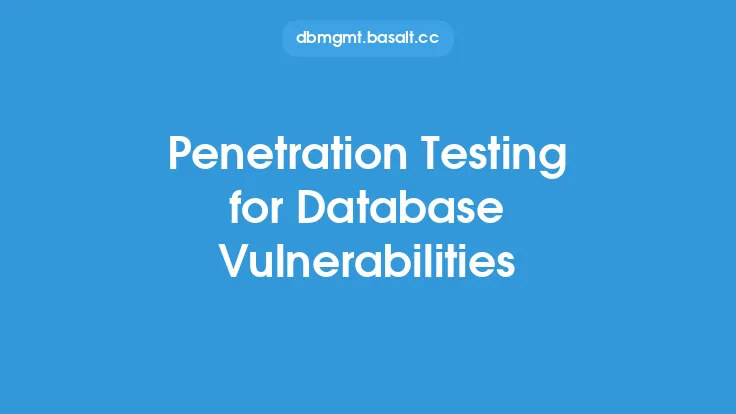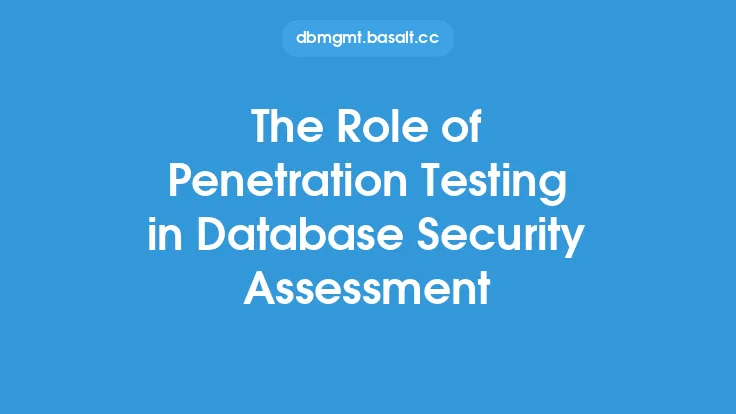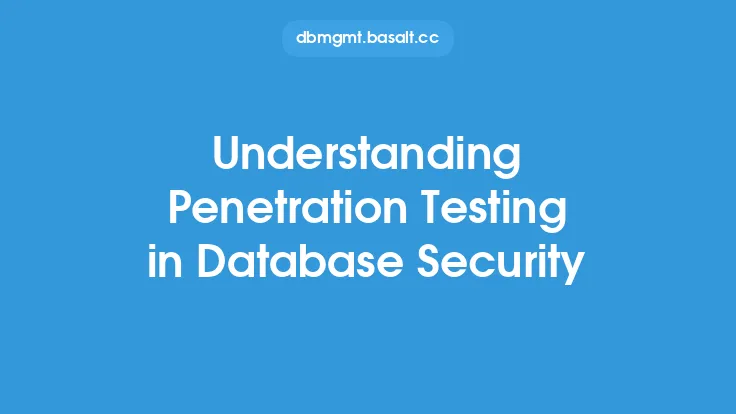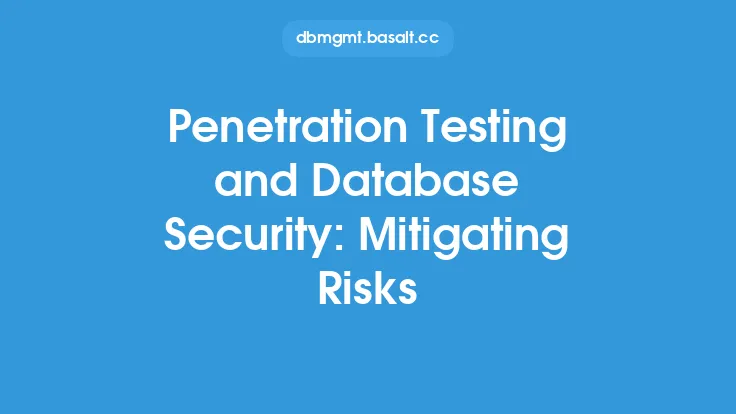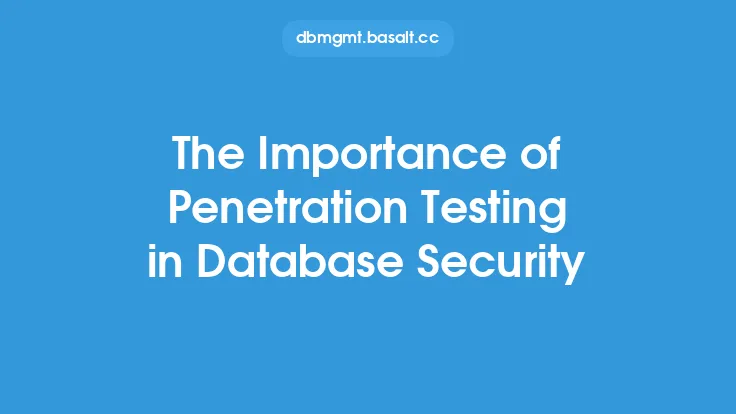Penetration testing is a crucial aspect of database security, as it helps identify vulnerabilities and weaknesses in the system. When it comes to database systems, penetration testing methodologies play a vital role in ensuring the security and integrity of the data. In this article, we will delve into the various penetration testing methodologies for database systems, exploring the different approaches, techniques, and tools used to test the security of these systems.
Introduction to Penetration Testing Methodologies
Penetration testing methodologies for database systems involve a structured approach to testing the security of the database. This includes identifying potential vulnerabilities, exploiting them, and providing recommendations for remediation. The goal of penetration testing is to simulate real-world attacks on the database system, helping organizations to identify and address security weaknesses before they can be exploited by malicious actors. There are several penetration testing methodologies that can be applied to database systems, including the Open Source Security Testing Methodology Manual (OSSTMM), the Penetration Testing Execution Standard (PTES), and the National Institute of Standards and Technology (NIST) Special Publication 800-53.
Phases of Penetration Testing
The penetration testing process for database systems typically involves several phases, including planning, reconnaissance, exploitation, and post-exploitation. The planning phase involves defining the scope of the test, identifying the database systems to be tested, and determining the testing methodology. The reconnaissance phase involves gathering information about the database system, including network topology, system configuration, and potential vulnerabilities. The exploitation phase involves attempting to exploit identified vulnerabilities to gain access to the database system. The post-exploitation phase involves analyzing the results of the test, identifying potential security weaknesses, and providing recommendations for remediation.
Database Penetration Testing Techniques
There are several techniques used in database penetration testing, including SQL injection, cross-site scripting (XSS), and buffer overflow attacks. SQL injection involves injecting malicious SQL code into the database to extract or modify sensitive data. XSS involves injecting malicious code into the database to execute on the client-side, potentially allowing an attacker to steal sensitive data or take control of the user's session. Buffer overflow attacks involve overflowing a buffer with malicious code, potentially allowing an attacker to execute arbitrary code on the database system.
Network Penetration Testing
Network penetration testing is an essential component of database penetration testing, as it involves testing the network infrastructure that supports the database system. This includes testing firewalls, routers, and other network devices to identify potential vulnerabilities. Network penetration testing techniques include network scanning, vulnerability scanning, and exploitation of identified vulnerabilities. The goal of network penetration testing is to identify potential entry points that an attacker could use to gain access to the database system.
Web Application Penetration Testing
Web application penetration testing is also an important aspect of database penetration testing, as many database systems are accessed through web applications. This involves testing the web application to identify potential vulnerabilities, such as SQL injection, XSS, and cross-site request forgery (CSRF). Web application penetration testing techniques include black box testing, white box testing, and gray box testing. The goal of web application penetration testing is to identify potential vulnerabilities that an attacker could use to gain access to the database system.
Database-Specific Penetration Testing
Database-specific penetration testing involves testing the database system itself, rather than the network or web application. This includes testing the database management system, database configuration, and database permissions. Database-specific penetration testing techniques include database scanning, vulnerability scanning, and exploitation of identified vulnerabilities. The goal of database-specific penetration testing is to identify potential security weaknesses in the database system, such as weak passwords, outdated software, or misconfigured permissions.
Tools and Techniques
There are several tools and techniques used in database penetration testing, including vulnerability scanners, penetration testing frameworks, and database-specific tools. Vulnerability scanners, such as Nessus and OpenVAS, are used to identify potential vulnerabilities in the database system. Penetration testing frameworks, such as Metasploit and Burp Suite, are used to exploit identified vulnerabilities and gain access to the database system. Database-specific tools, such as SQLMap and DbExploit, are used to test the database system itself, rather than the network or web application.
Conclusion
In conclusion, penetration testing methodologies for database systems are a crucial aspect of database security. By using a structured approach to testing the security of the database system, organizations can identify potential vulnerabilities and weaknesses, and take steps to remediate them. The various phases of penetration testing, including planning, reconnaissance, exploitation, and post-exploitation, provide a comprehensive approach to testing the security of the database system. The different techniques used in database penetration testing, including SQL injection, XSS, and buffer overflow attacks, provide a range of options for testing the security of the database system. By using the right tools and techniques, organizations can ensure the security and integrity of their database systems, and protect against potential attacks.

